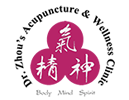Along with inspecting (conducting a general observation of the patient), auscultation and olfaction (i.e., listening and smelling), and questioning (obtaining information about a patient’s medical history and symptoms), pulse diagnosis is considered an essential part of the practice of traditional Chinese medicine. It has been practiced in both China and Japan for centuries, and while it is difficult to master and considered somewhat subjective by physicians in the West, it remains an important diagnostic tool by both TCM practitioners and patients.
Origins
While the first use of pulse diagnosis in traditional Chinese medicine remains unknown, one of the earliest references to pulse diagnosis appears in the Huangdi Neijing, also known as The Yellow Emperor’s Internal Classic or The Yellow Emperor’s Classic of Internal Medicine. A passage in the book notes that, “In diagnosis, observation of the spirit and facial color, and palpation of the pulses, are the two methods that were emphasized by the ancient emperors and revered teachers,” which implies that the practical use of pulse diagnosis existed long before the Huangdi Neijing was written. Other passages in the book provide information on certain types of pulses and their relation to particular diseases.
Another important work that explored the use of pulse diagnosis is the Mai Jing, or Pulse Classic, which is believed to have been written by Wang Shuhe, a Chinese physician who lived in the third century A.D. The Mai Jing expanded on the information contained in the Huangdi Neijing, and included a wide range of applications for pulse diagnosis, along with prognoses and ways to analyze diseases based on the type of pulse a patient demonstrated.
Why Does a Practitioner Take the Patient’s Pulse?
In traditional Chinese medicine, pulse diagnosis is used to check a variety of functions. Primary among these are the condition of the patient’s blood and qi, an invisible type of life force or energy that travels through the body’s acupuncture meridians. Using pulse diagnosis, an acupuncturist can determine areas of the body that may have disruptions or blockages of qi, and may also be able to determine the condition of certain internal organs.
Taking the Pulse
Over time, a variety of locations have been used in the process of pulse diagnosis. Originally, pulses were felt at nine locations, three on the head, three on the hands, and three on the legs. Some practitioners still examine the pulse at these locations, along with other pressure points along the body.
In modern times, however, the majority of practitioners perform a simplified version of pulse diagnosis. This simplified version focuses on the radial artery above the wrist, examining three finger positions (cun, guan and chi), and felt at three depths (superficial, intermediate and deep). Both wrists are palpated, one wrist at a time. The results of these readings are used to categorize a patient’s pulse.
How Many Pulses Are There? What Do They Mean?
The exact number of pulses that can be taken has yet to be determined. Some textbooks list only a dozen or so types of pulses. Others list 28 or 40. Generally, however, there are approximately two dozen types of pulses that are recognized by most practitioners. These pulses include:
- bowstring
- deep
- choppy
- faint
- fast
- feeble
- floating
- forceful
- gliding
- hasty
- hidden
- hollow
- hurried
- intermittent
- irregular
- knotted
- long
- moderate
- moving
- rapid
- relaxed
- rough
- scattered
- short
- sinking
- slippery
- slow
- soggy
- superficial
- surging
- swift
- thready
- tight
- weak
Many of these pulses can be lumped into broad categories. For instance, a rapid pulse is often defined as having more than five beats to a breath. A rapid pulse can be considered either forceful or weak, which would indicate either an excess or deficiency of qi. Similarly, slow pulses (which are also measured using a patient’s breathing) can be categorized as forceful or weak. Other main categories of pulses include floating, deep, slippery, rough, irregular, and bowstring.
Precautions and Contraindications
Pulse diagnosis should be performed on patients under normal conditions to insure accuracy. The pulse should not be diagnosed after exercise, sex, eating or drinking, or in a room in which the temperature is very hot or very cold. These factors may contribute to an inaccurate diagnosis. Ideally, both the patient and practitioner should be relaxed and breathing normally when the pulse is taken.
In addition, while pulse diagnosis can be performed on almost every patient, it is best used in conjunction with other diagnostic methods. In particular, when treating patients with severe or chronic conditions, or disorders of unknown origin, acupuncturists should employ several diagnostic tools to arrive at the best diagnosis possible.
In Conclusion
Pulse diagnosis is a quick, inexpensive, and noninvasive diagnostic tool. When performed by a trained professional, it can be an effective way of determining the health condition of a patient.
To find a licensed acupuncturist in your area, visit the National Certification Commission for Acupuncture and Oriental Medicine’s (NCCAOM) practitioner database at www.nccaom.org.
References
- Dharmananda S. The significance of traditional pulse diagnosis in the modern practice of Chinese medicine. Portland, OR: Institute for Traditional Medicine.www.itmonline.org/arts/pulse.htm. Published August 2000.
- Dupler D. Pulse diagnosis. In: Krapp K, Long JL (eds.) Gale Encyclopedia of Alternative Medicine. Farmington Hills, MI: Gale Group, 2001.
- Kapke B. Deep listening: revealing the pulse. Massage & Bodywork Magazine, April/May 2002.
- Kidson R. Acupuncture for Everyone. What it Is, Why it Works, and How it Can Help You. Rochester, VT: Healing Arts Press, 2000, pp. 82-86.
